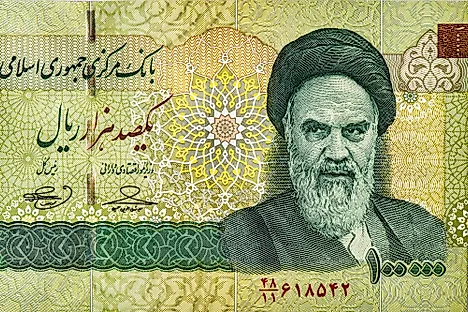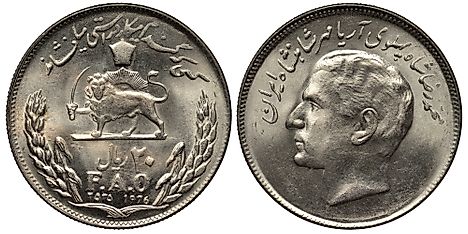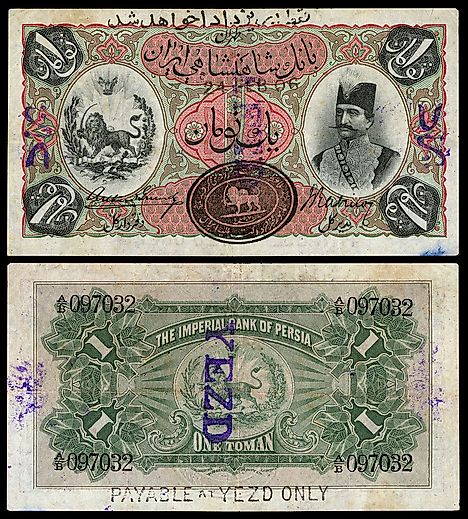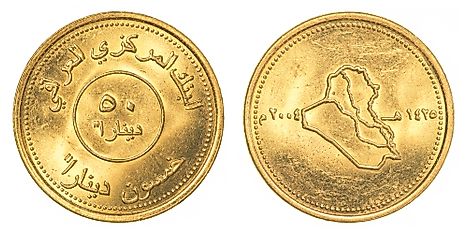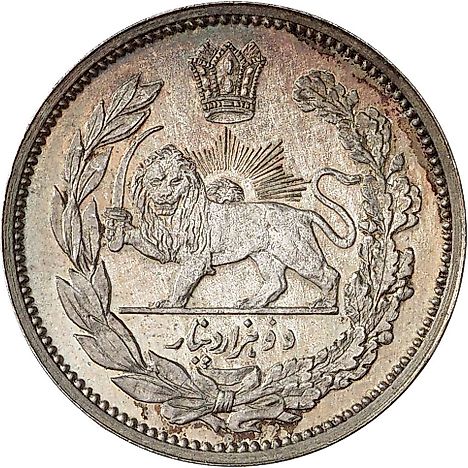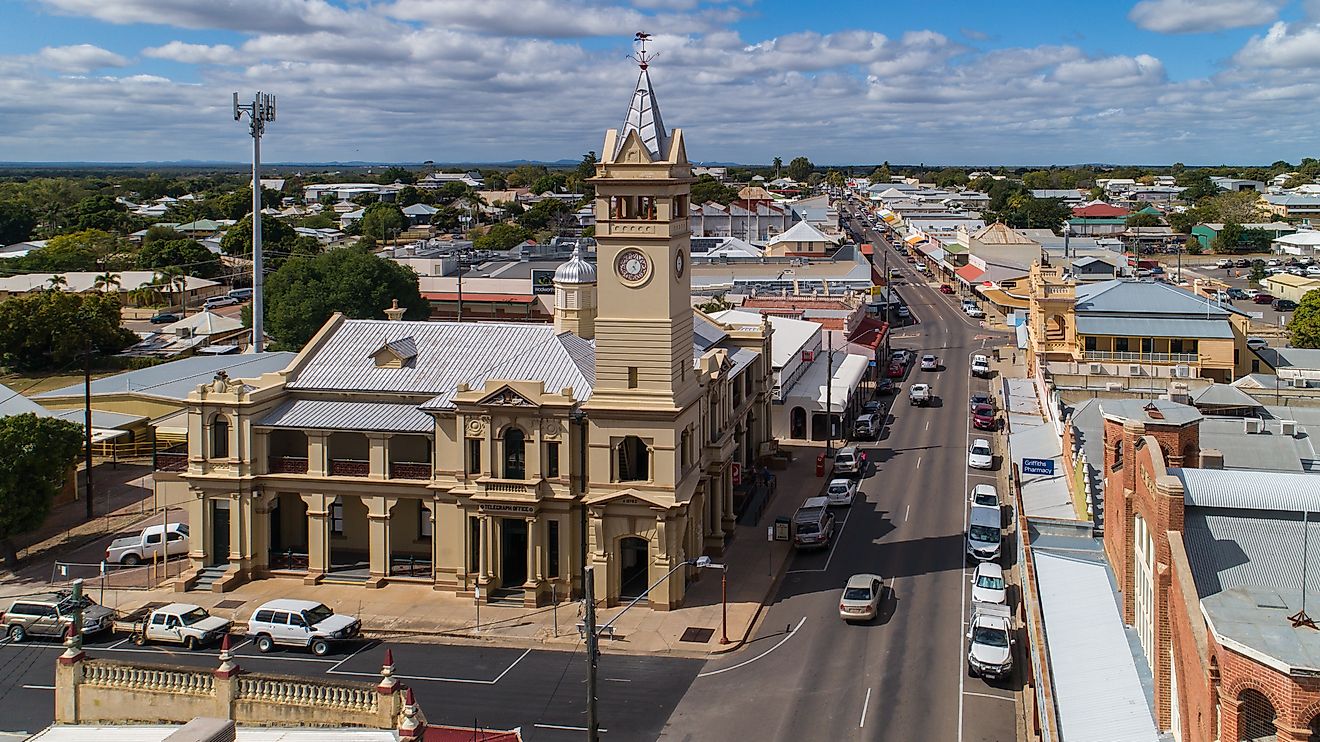Flags, Symbols, & Currencies of Iran
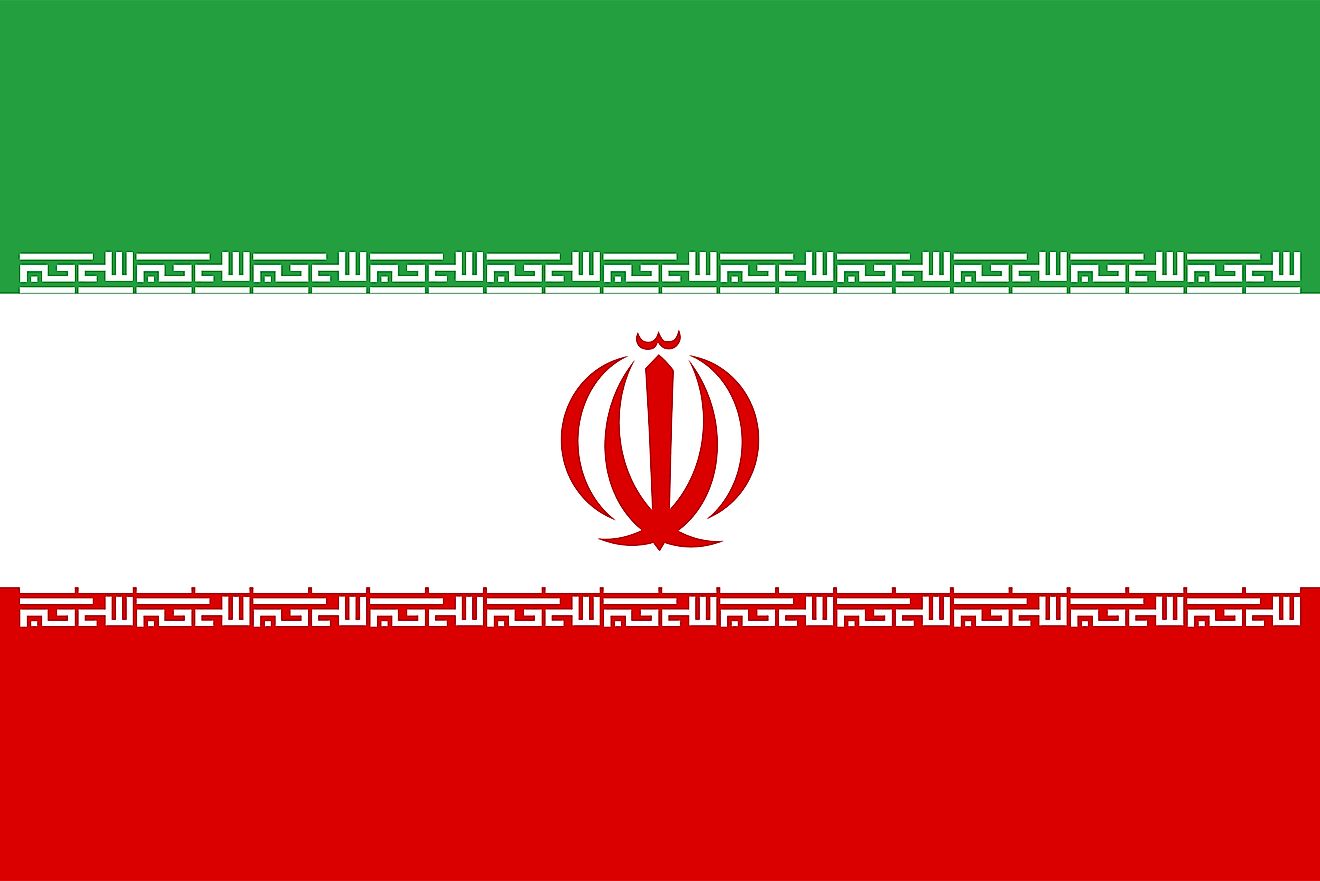
Flags and banners have always played an important role in Iranian culture and politics. The flags representing Iran has also evolved greatly over time. The most popular symbol of the country prior to the Iranian Revolution was the Lion and Sun motif. It also featured in the imperial flag of the country. Based on astronomical and astrological configurations, the motif represented both ancient and modern traditions of the country. It first became popular in the 12th century. In the 19th century, the motif was combined with the tricolored bands of green, white, and red to form the Iranian flag. However, after the 1979 Revolution, the use of the Lion and Sun came to an end and it was replaced by the National Emblem.
The flag of Iran was officially adopted on July 29, 1980. It is tricolor flag with three equally sized bands of three different colors; green, white, and red. The in the middle of the white band is a national emblem featuring a stylized representation of the word Allah in the shape of a tulip, a symbol of martyrdom, in red. The Arabic phrase Allāhu Akbar, known as the takbir, is also mentioned in the flag. It is repeated 11 times in the Kufic script on the inner edges of the red and green bands. The national flag of Iran has a height to length proportion of 1:2
The colors of the flag date to the mid-18th century and are symbolic of several attributes of the Irani people. Green in the flag of Iran is a symbol of happiness, unity, nature, growth, etc. White symbolizes freedom. Red signifies martyrdom, life, fire, love, courage, and bravity. According to sources, the white stylized script on the red and green panels, repeated 22 times, is the Islamic phrase Allahu Akbar, meaning "God is greater than to be described."
The History of the Flag
The Iranian national flag was formally adopted on July 29, 1980. The new flag and seal of Iran was mentioned in the 1980 Constitution of the country. Accordingly, the Parliament replaced the old flag and seal with the new ones. The flag was designed by Hamid Nadimi and the leader of the Iranian Revolution, Grand Ayatollah Khomeini, approved it. The new flag symbolized the replacement of the 2,500 year old Persian monarchy with the Islamic Republic after the 1979 Iranian Revolution. The flag of the monarchy is today, however, used by a small number of Iranian exiles in other parts of the world. The old flag, an Iranian tricolor with the centrally located Lion and the sun is used by these people as a show protest against the current regime in Iran.
Symbols of Iran
National Coat of Arms of Iran

The current national emblem of Iran is black in color and features four crescents, two on each sides of a sword, resembling a water lilly, and summounted by shadda. The two inner crescents intersect near the tip of the sword. The four crescents are a stylized representation of the word "Allah. " The coat of arms symbolizes the five principles of Islam. The centered sword represents the country's strength. It is designed in the shape of tulip in memory of the Iranians who died for their country. The coat of arms was designed by Hamid Nadimi and adopted on May 9, 1980.
National Anthem
- Anthem Title: Sorude Melliye Jomhuriye Eslâmiye Irân (National Anthem of the Islamic Republic of Iran)
- Music composer: Hassan Riyahi
- Lyricist: Sayed Bagheri
- Date of Adoption: 1990
Iran's oficial anthem, simply known as "National Anthem of the Islamic Republic of Iran, was adopted in 1990 to replace the old anthem known as "Pâyande Bâdâ Irân." It was written by Sayed Bagheri and the music composed by HassanRiyahi. It is one of the shortest anthems in the world, with only seven stanzas. This anthem has faced oppositions from some Iranians, who prefer the El Iran as the unofficial anthem
Sorude Melliye Jomhuriye Eslâmiye Irân /سرود ملی جمهوری اسلامی ایران) (Persian)
سر زد از افق مهر خاوران
فروغ دیدهی حقباوران
بهمن فر ایمان ماست
پیامت ای امام، استقلال، آزادی، نقش
جان ماست
شهیدان، پیچیده در گوش زمان فریادتان
پاینده مانی و جاودان
مهوری اسلامی ایران
National Anthem of the Islamic Republic of Iran
Upwards on the horizon rises the Eastern Sun,
The light in the eyes of the believers in justice,
Bahman is the zenith of our faith.
Your message, O Imam, of independence, freedom, is imprinted on our souls.
O Martyrs! Your clamors echo in the ears of time.
Enduring, continuing, and eternal.
The Islamic Republic of Iran!
The Currency of Iran is the Iranian rial
The Iranian rial is the official currency in Iran and is abbreviated as IRR. The Iranian rial is made up of 1000 subunits known as dinars. The Iranian rial was introduced in 1798 and was equivalent to 1,250 dinars. However, the issue of the rial ceased in 1825 as the country decimalized its currency and was replaced by the qiran. The rial was later adopted in 1932 as the official currency in Iran and replaced the qiran at par. During its adoption, the rial was pegged to the British pound, with one British pound being equivalent to 59.75 Iranian rials. Then in 1945, the government decided to shift it currency peg from the British pound to the US dollar, with one US dollar being equivalent to 32.25 rials. The Iranian rial faced increased inflation during the country’s Islamic Revolution in the 1970s. International sanctions from major global economies, such as the United States and the EU, in the 21st century stemming from the country’s nuclear program worsened the inflation of the currency, with the rial losing 80% of its value in 2012.
Historical Currencies of Iran
Iranian toman
The Iranian toman was the official currency in Iran until the adoption of the Iranian rial in 1932. The toman was made up of 10,000 dinars and between 1798 and 1825 it was subdivided into 8 rials. The toman was issued by the Imperial Bank of Persia in gold coins as well as banknotes with the most frequently used coins being in 25, 10, 5, 2, 1, a half, and a fifth toman denominations. In 1890, banknotes were issued in 1000, 500, 100, 50, 25, 20, 10, 5, 3, 2 and 1 toman denominations. In 1924, the Imperial Bank of Persia issued a new series of banknotes which consisted of 100, 50, 20, 10, 5, 2 and 1 toman banknotes. The Imperial Bank of Persia issued the last gold toman coins in 1965, 33 years after the currency ceased from being the official currency in Iran. Although the toman has been replaced as the country's official currency, the term continues to be used, and is considered to be a superunit of the Iranian rial, where one toman is equivalent to 10 Iranian rials.
Iranian qiran
Also known as the kran or the qerun, the Iranian qiran was the currency used in Iran and was introduced in 1825, with ten qirans being equivalent to 1 toman. It was demonetized in 1932 after being replaced by the current Iranian rial at par. The qiran was made up of subunits known as shahi, where 20 shahi were equivalent to 1 qiran. Other subunits of the qiran include the dinar, with 1000 dinars being equal to 1 qiran. In 1930, the Iranian qiran was pegged on the British sterling pound, with 1 sterling pound being equal to 59.75 qirans.
